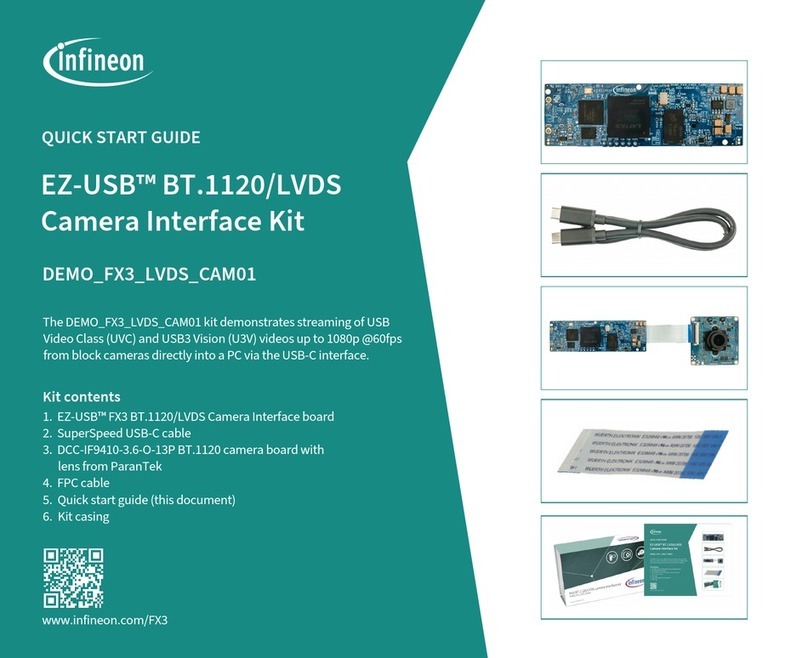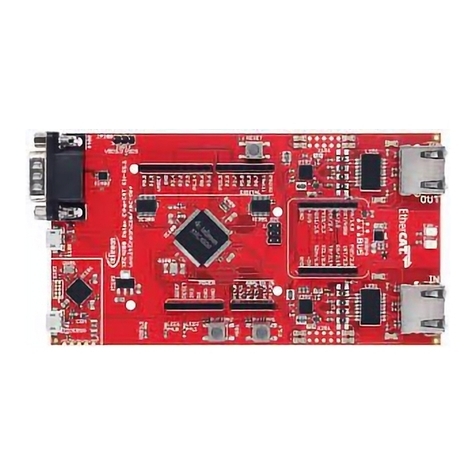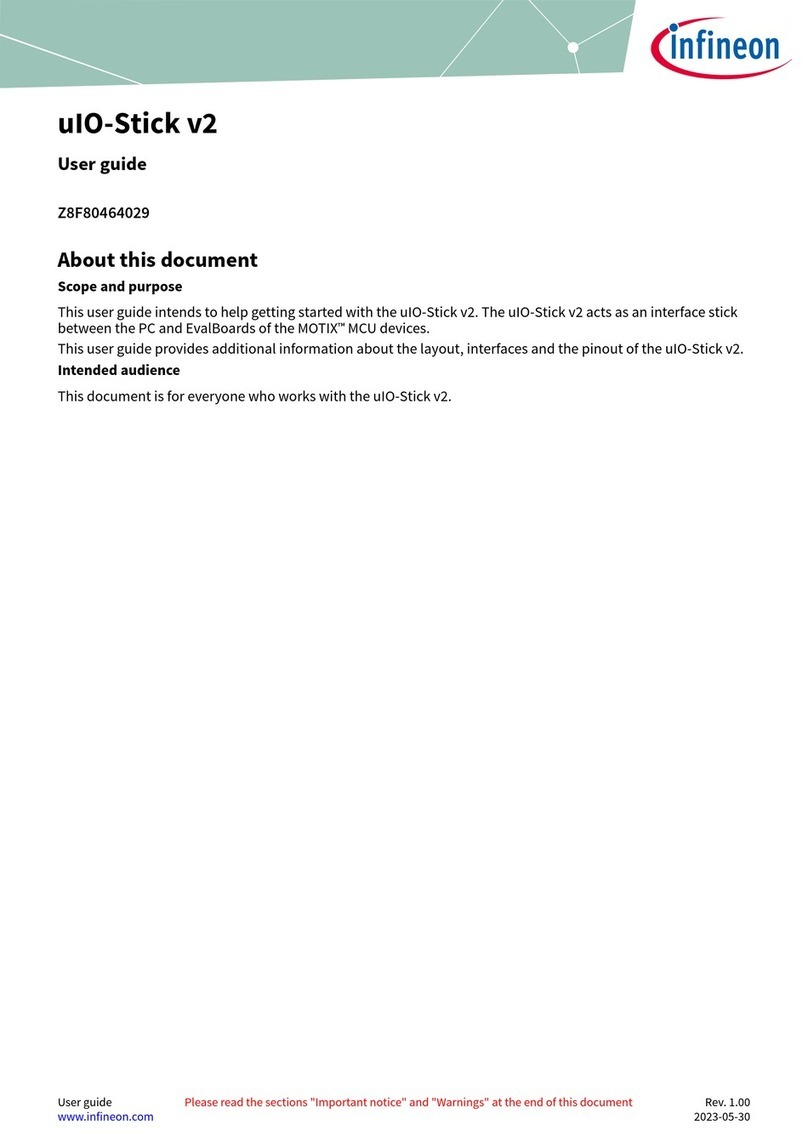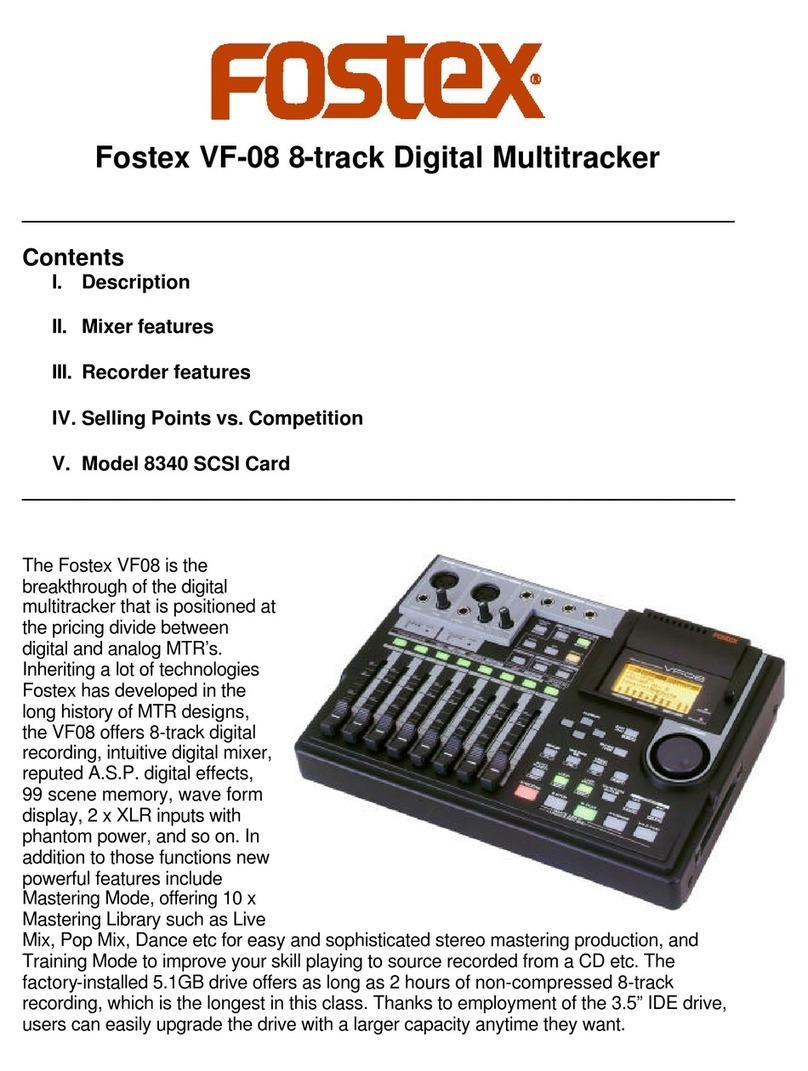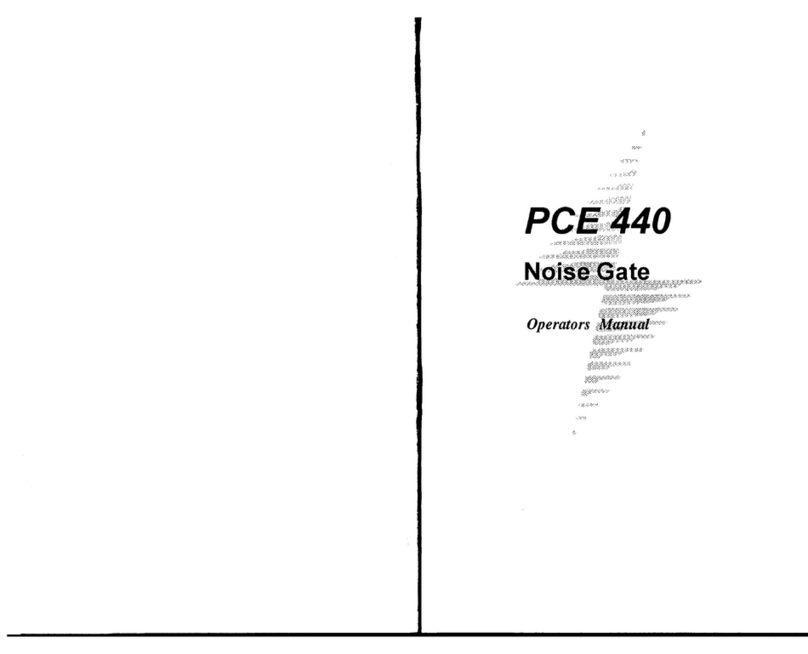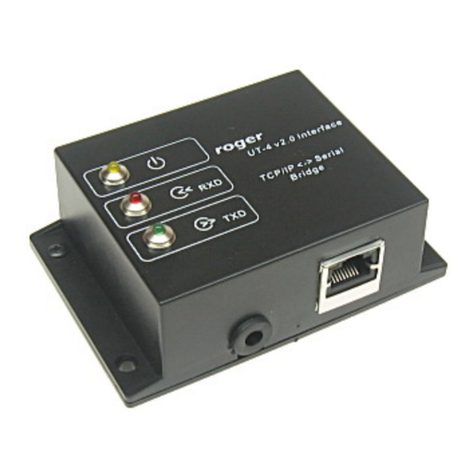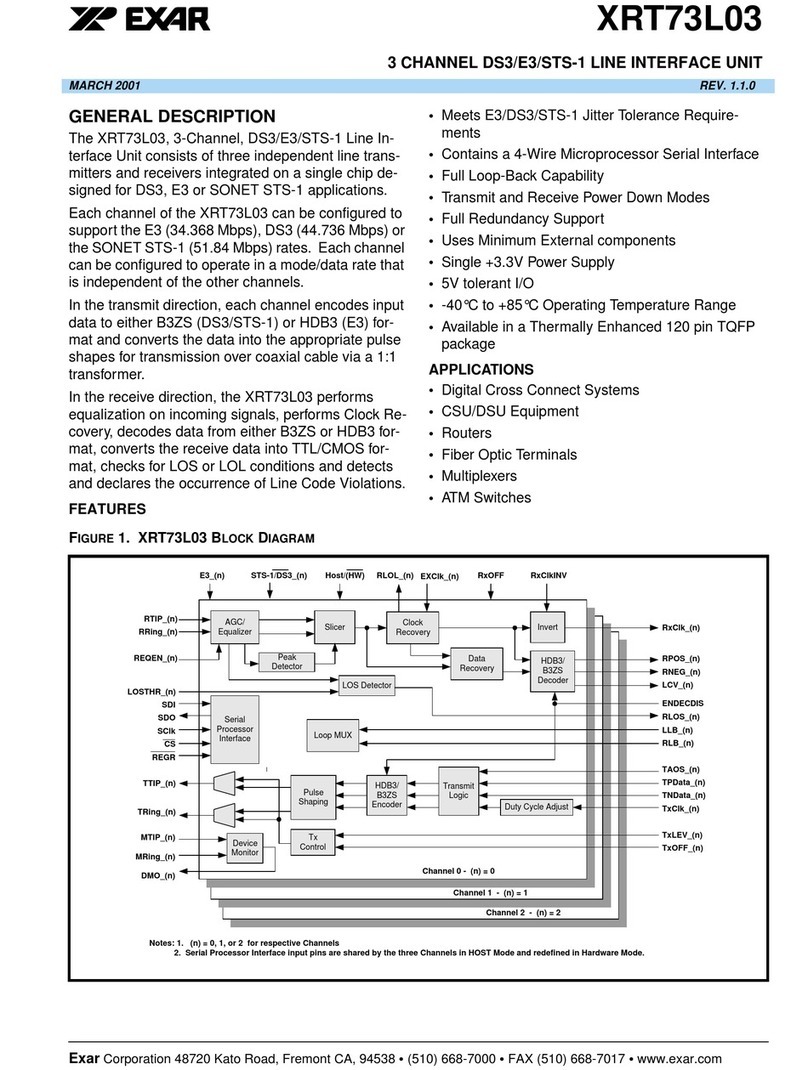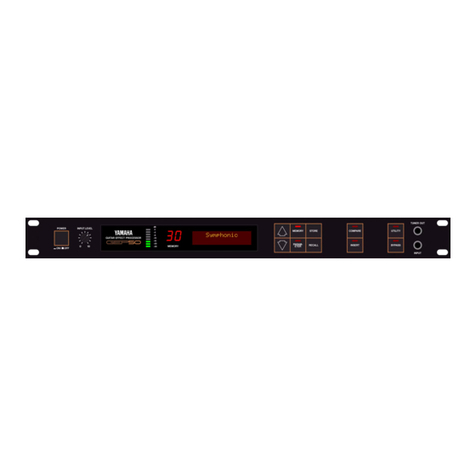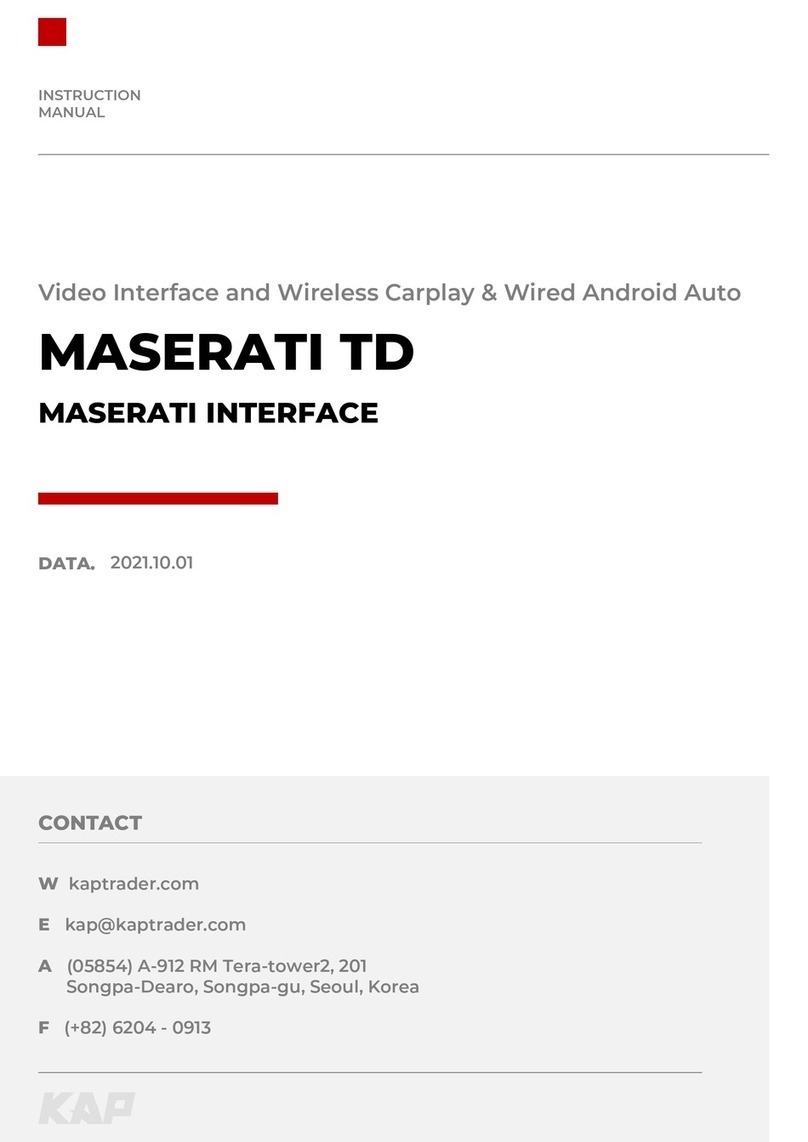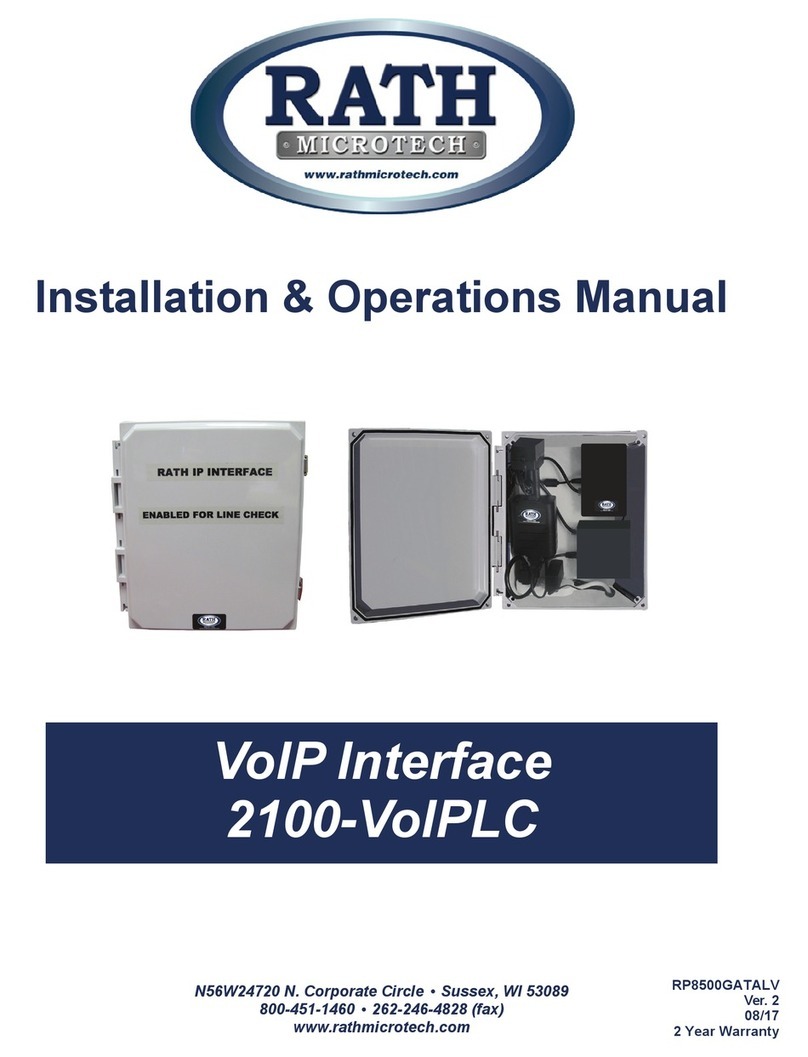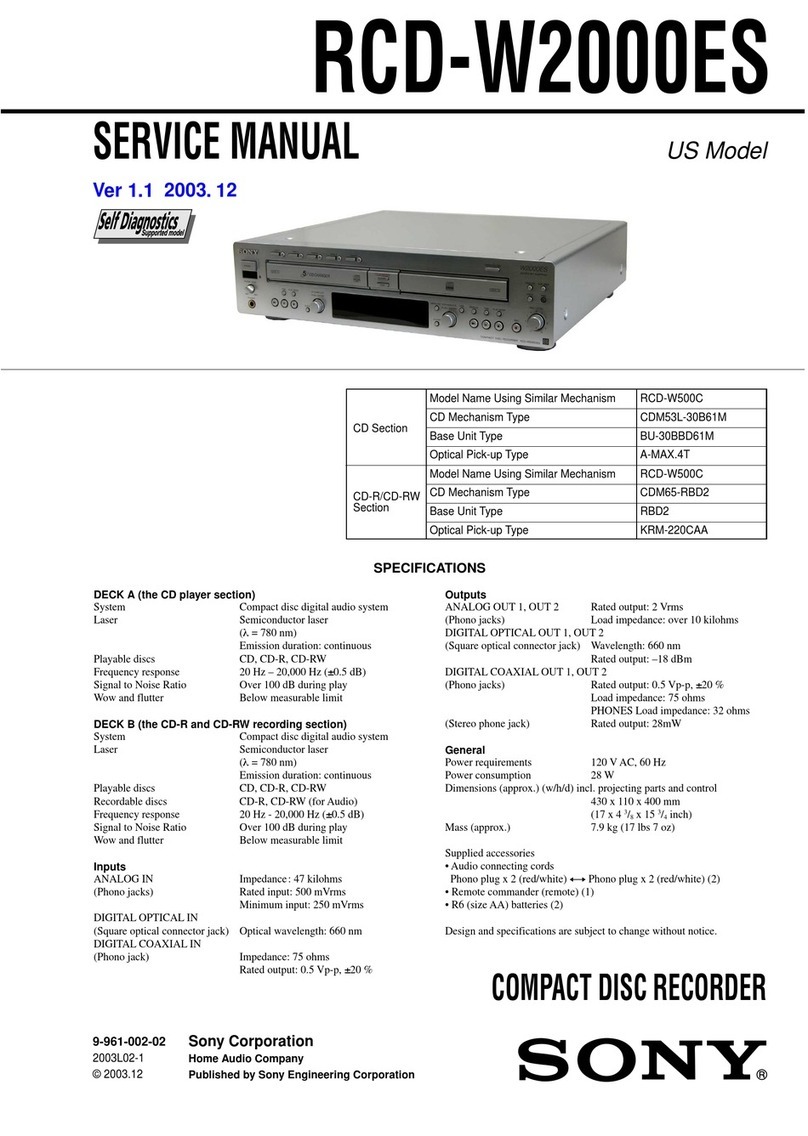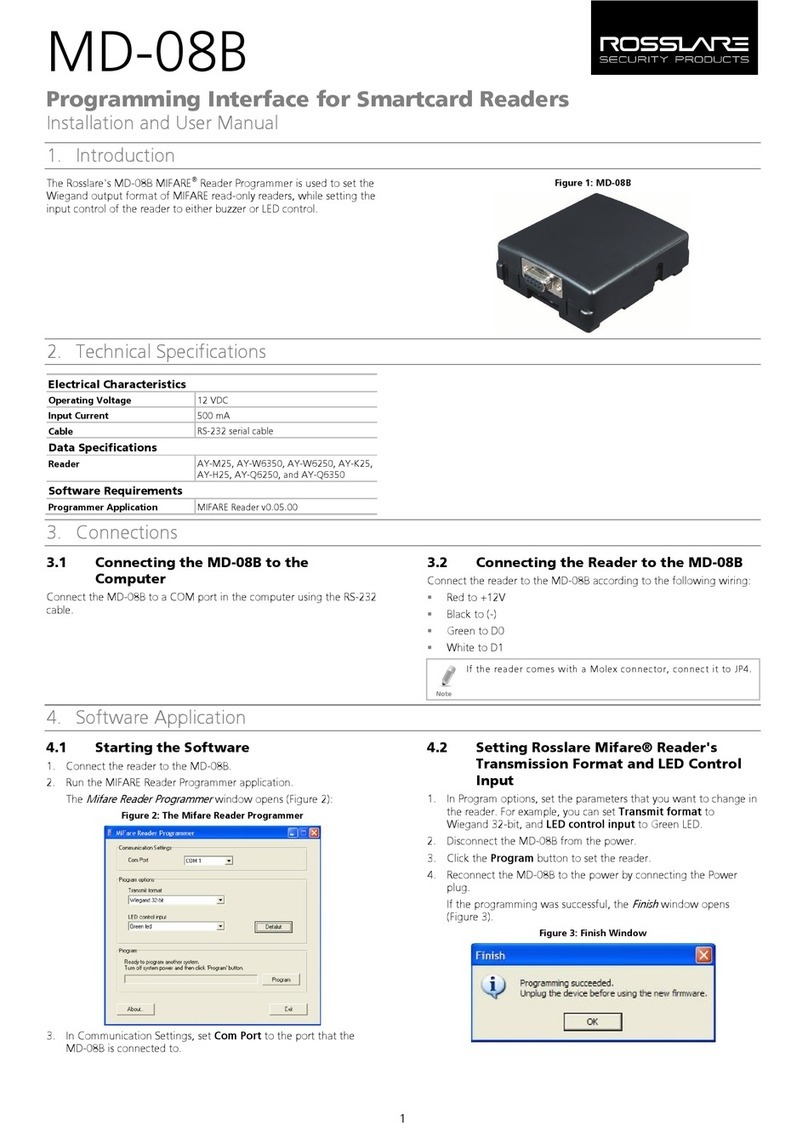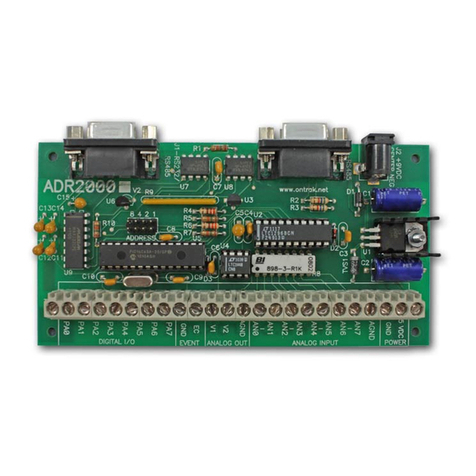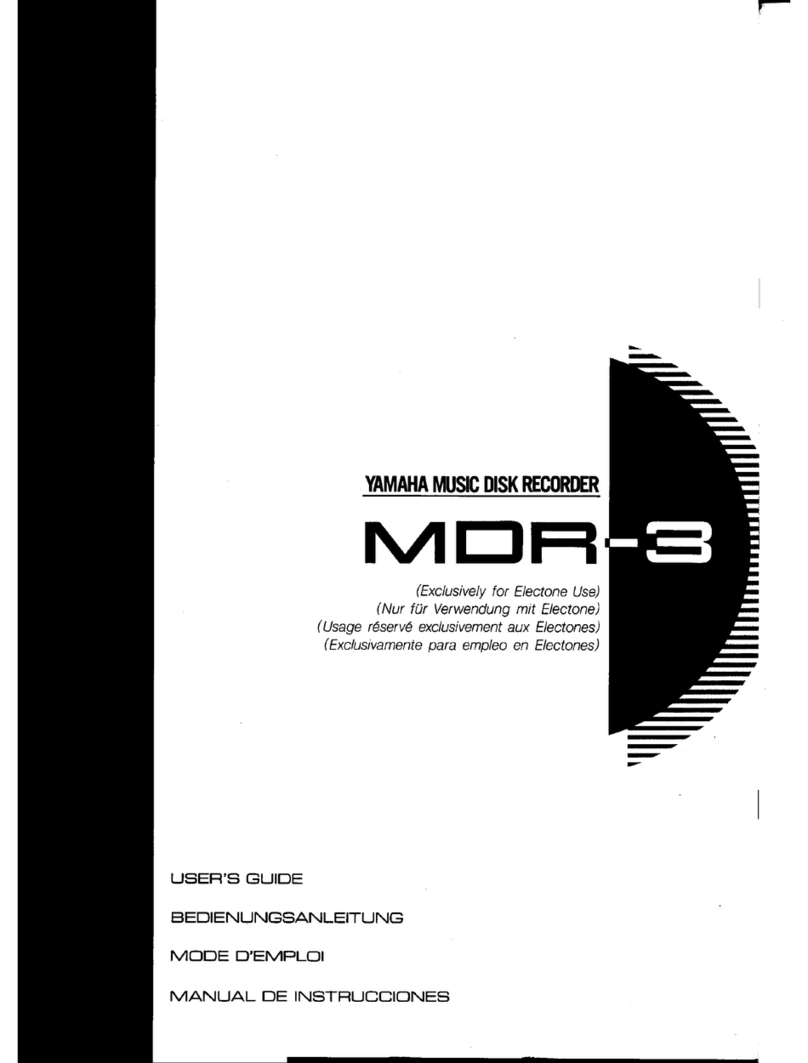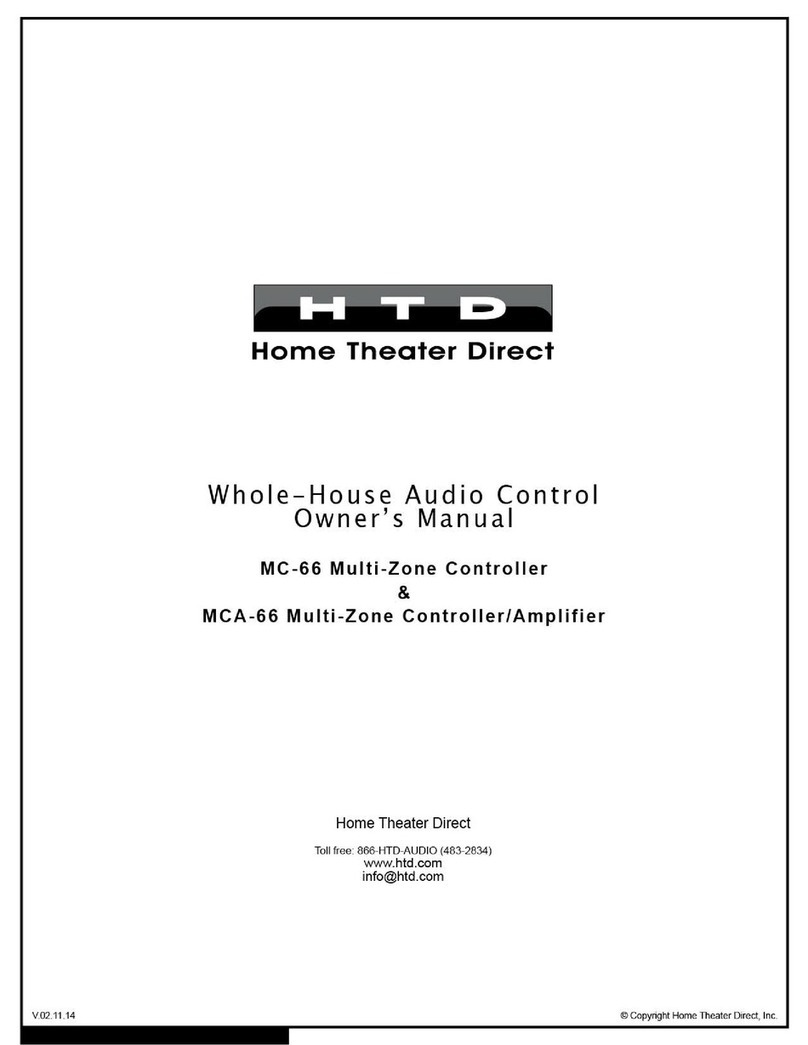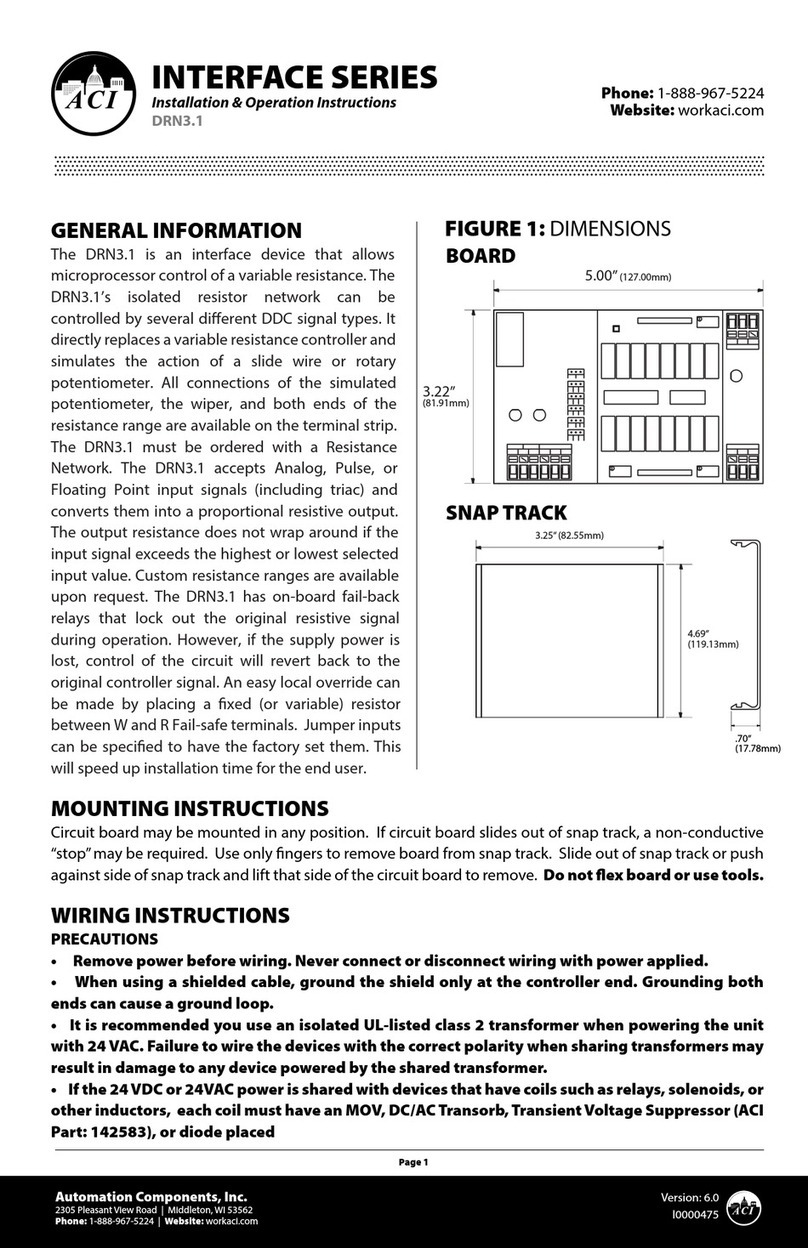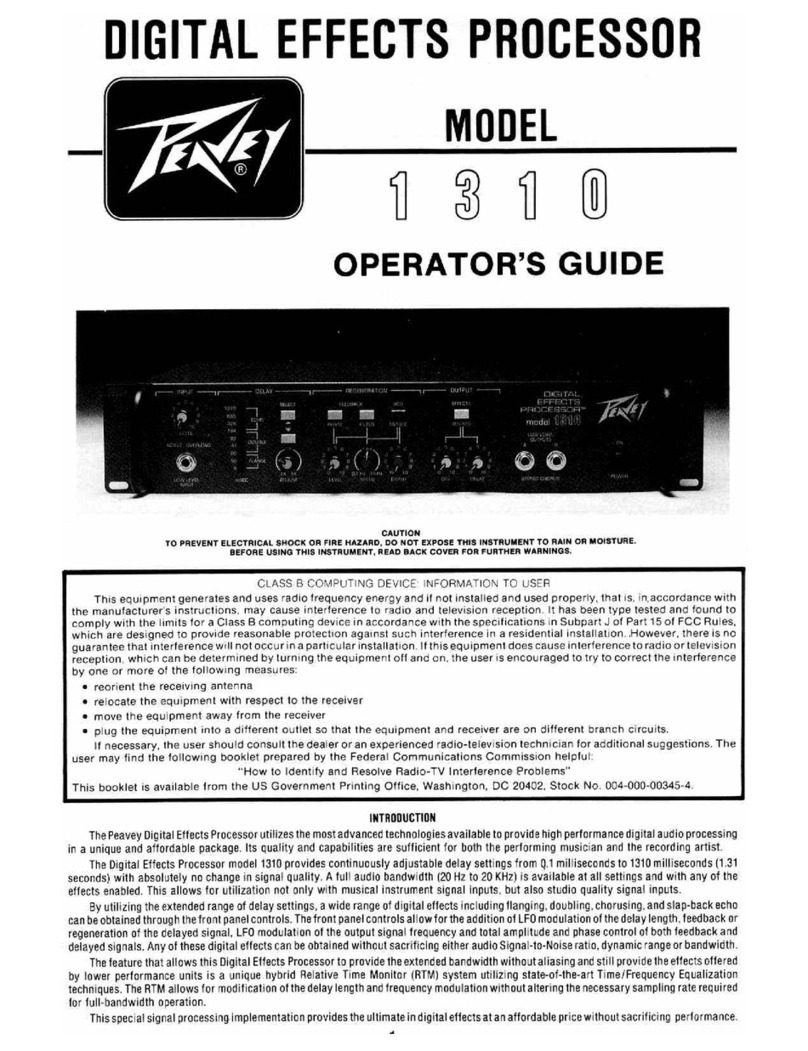Infineon MCU4 User manual

Application Note
Please read the sections “Important notice” and “Warnings” at the end of this document
V2.1
www.infineon.com
2023-02-14
AN602
Radar Baseboard MCU4
XENSIV™24 GHz radar system platform
B o a r d v e r s i o n V 2.0
About this document
Scope and purpose
This application note describes the Radar Baseboard MCU4 (DEMO RADAR MCU4), part of Infineon’s XENSIV™
24 GHz radar system platform. It also introduces the concept of the platform, which supports multiple sensors.
At the heart of the board isthe XMC4700, a 32-bit Arm® Cortex®-M4 MCU. It also has a high-speed USB 2.0 interface
to host a computer for visualization or fast data processing. In addition, the board is compatible with the Arduino
standard, which facilitates access to existing mass-market daughter boards for mass data storage or wireless
communication Arduino boards.
Intended audience
This document is intended for anyone working with Infineon’s XENSIV™24 GHz radar system platform.
Related documents
Additional information can be found in the documentation provided with the “Radar Sense2GoL Pulse” or
“Radar Distance2GoL” tools in the Infineon Developer Center (IDC), or from www.infineon.com/24GHz.

Application Note
2
V2.1
2023-02-14
Radar Baseboard MCU4
XENSIV™24 GHz radar system platform
Table of contents
Table of contents
About this document....................................................................................................................... 1
Table of contents............................................................................................................................ 2
List of figures ................................................................................................................................. 3
List of tables .................................................................................................................................. 4
1Introduction .......................................................................................................................... 5
1.1 Key features.............................................................................................................................................5
2Hardware description –Radar Baseboard MCU4 ........................................................................ 6
2.1 Overview..................................................................................................................................................6
2.2 Block diagram..........................................................................................................................................7
2.3 Power supply...........................................................................................................................................7
2.3.1 Battery and external power supply ...................................................................................................8
2.3.1.1 Hardware changes (for V1.1 only) ................................................................................................8
2.3.1.2 External power supply operation with battery charging.............................................................9
2.3.2 USB operation..................................................................................................................................11
2.4 Current measurement of radar sensor shields ....................................................................................12
2.5 EEPROM .................................................................................................................................................12
2.6 Microcontroller unit –XMC4700............................................................................................................13
2.7 User-configurable LEDs.........................................................................................................................13
2.8 User-configurable button .....................................................................................................................14
2.9 SD card reader.......................................................................................................................................14
2.10 Level shifters..........................................................................................................................................14
3Connectors...........................................................................................................................16
4Firmware development and debugging ...................................................................................19
4.1 Debugging..............................................................................................................................................19
4.1.1 Onboard debugger and UART connection......................................................................................21
5Authors................................................................................................................................22
6References ...........................................................................................................................23
Revision history.............................................................................................................................24

Application Note
3
V2.1
2023-02-14
Radar Baseboard MCU4
XENSIV™24 GHz radar system platform
List of figures
List of figures
Figure 1 Radar Baseboard MCU4 with main components and dimensions....................................................6
Figure 2 Block diagram –Radar Baseboard MCU4...........................................................................................7
Figure 3 Block diagram –power supply concept .............................................................................................8
Figure 4 P8 header configuration for using battery or external power supply...............................................8
Figure 5 External power supply and battery charging –block diagram..........................................................9
Figure 6 External power supply and battery charging –schematic ................................................................9
Figure 7 Battery operation –block diagram...................................................................................................10
Figure 8 Battery operation –schematic .........................................................................................................10
Figure 9 Operation with USB cables ...............................................................................................................11
Figure 10 Current sensors connections............................................................................................................12
Figure 11 Block diagram –XMC4700.................................................................................................................13
Figure 12 User-configurable LEDs.....................................................................................................................13
Figure 13 User-configurable button .................................................................................................................14
Figure 14 SD card reader connections..............................................................................................................14
Figure 15 Level translator (U6, U7 and U8) connections..................................................................................15
Figure 16 External headers –P2, P3, P4, P5 and P6..........................................................................................16
Figure 17 V1.1 Debugger components .............................................................................................................19
Figure 18 P8 header connections –for onboard debugger, for external debugger (V1.1 only)......................20
Figure 19 V2.0 Debugger components –For debugging and flashing, the USB cable has to be simply
connected to the “Debug USB” port. Header settings are no longer needed...............................20
Figure 20 Recommended installation options for the J-Link driver................................................................21

Application Note
4
V2.1
2023-02-14
Radar Baseboard MCU4
XENSIV™24 GHz radar system platform
List of tables
List of tables
Table 1 User LEDs pin assignment.................................................................................................................14
Table 2 External header (P2) –pin description .............................................................................................16
Table 3 External header (P3) –pin description .............................................................................................17
Table 4 External header (P4) –pin description .............................................................................................17
Table 5 External header (P5) –pin description .............................................................................................17
Table 6 External header (P6) –pin description .............................................................................................17
Table 7 Debugger type and header settings (V1.1 only) ...............................................................................20
Table 8 XMC4200 pins used for debugging and UART communication .......................................................21

Application Note
5
V2.1
2023-02-14
Radar Baseboard MCU4
XENSIV™24 GHz radar system platform
Introduction
1Introduction
The Radar Baseboard MCU4 is a generic sensor interface for Infineon’s 24 GHz radar sensors. The central MCU
can perform radar data processing or forward the sensor data to a USB interface or an Arduino interface. The
board is designed to allow customers to do prototyping and system integrations as well as initial product
feature evaluations.
An onboard debugger with licensed firmware from SEGGER, it also allows easy debugging over USB. Infineon’s
powerful, free-of-charge toolchain DAVE™can be used for programming the XMC4700 microcontroller. This
application note describes the key features and hardware configuration of the Radar Baseboard MCU4 in detail.
1.1 Key features
The primary features of the Radar Baseboard MCU4 are:
•XMC4700 –32-bit Arm® Cortex®-M4 based microcontroller for signal processing
•Multiple power supply possibilities –micro-USB, external power supply or battery
•Compatible with Arduino for ease of use and prototyping
•Current sensors for current consumption estimation
•Onboard debugger for debugging
•SD card reader for raw data storage
•User-configurable LEDs
•User-configurable button

Application Note
6
V2.1
2023-02-14
Radar Baseboard MCU4
XENSIV™24 GHz radar system platform
Hardware description –Radar Baseboard MCU4
2Hardware description – Radar Baseboard MCU4
This section presents a detailed overview of the Radar Baseboard MCU4 hardware specifications, including
features, power supply and board interfaces.
2.1 Overview
The Radar Baseboard MCU4 is shown in Figure 1. The board makes it possible to implement different settings to
get closer to a custom-fit solution for the use case. It also makes it possible to quickly gather sampled radar
data that can be used to develop radar signal-processing algorithms on a PC or implement target detection
algorithms directly on the microcontroller using DAVE™.
XMC4200
debugger MCU
Cortex debugger
connector
Debug USB
External
power
connector
Linear charge
management
controller
LiPo battery
connector
LDO Current
Sensor
Arduino-compatible
connectors
SD card
reader
XMC4700 MCU
Voltage level
tanslator
Current
Sensor
Current
Sensor
Connectors to
BGT24LTR11
Shield
LDO
J-K Flipflop
85 mm
55 mm
Figure 1 Radar Baseboard MCU4 with main components and dimensions

Application Note
7
V2.1
2023-02-14
Radar Baseboard MCU4
XENSIV™24 GHz radar system platform
Hardware description –Radar Baseboard MCU4
2.2 Block diagram
Figure 2 shows the block diagram of the Radar Baseboard MCU4. It features Infineon’s XCM4700, 32-bit Arm®
Cortex®-M4 based microcontroller for signal processing. It has two connectors to interface with the RF shield.
The board also has several debugging possibilities such as Tag connect, cortex connector and also an onboard
debugger. For user flexibility, it has three configurable LEDs that can be used for status indication and also a
configurable button. An SD card reader is also available for data storage.
The board is powered via the micro-USB cables. It is also possible to power it via external 7 V power supply or
with a battery. A series of low-noise voltage regulators is used to provide a regulated power supply to the
different building blocks of the board and the connected shield. There are three current sensors on the board
for measuring current consumption of the connected shield or Arduino.
Connectors b/w Base Board and Radar Shield
ADC
ADC
ADC
ADC
CCU8
CCU4
USIC
XMC4700
SD card
reader SDMMC
UART
SWD
SCK
Debug
LED
12
MHz
User LED
XMC4200
(Debugger)
12
MHz
LDO
LDO
LDO
3.3V
VCC1
Rshunt
7V
External Power Supply
5Vinput
5V
Battery
Micro
USB
Micro
USB
Battery Manager
Current Sensors
3.3V
5V
User LED
Figure 2 Block diagram –Radar Baseboard MCU4
2.3 Power supply
The Radar Baseboard MCU4 is powered via external 7 V power, battery or two micro-USB cables. Figure 3 shows
the power supply concept used in the system.

Application Note
8
V2.1
2023-02-14
Radar Baseboard MCU4
XENSIV™24 GHz radar system platform
Hardware description –Radar Baseboard MCU4
Baseboard
MCU4
LDO
VCC1
Rshunt
7V
External Power Supply
5Vinput
5V
Battery
Battery Manager
Current Sensors
3.3V
LDO
3.3V
5Vdebug
Micro
USB
XMC4200
(Debugger)
LDO
5Vinput
RF Shield
Micro
USB
Debug (X6) Default (X5)
Figure 3 Block diagram –power supply concept
2.3.1 Battery and external power supply
The Radar Baseboard MCU4 can be powered up with an external power supply (7 V) to operate the board. It is
also possible to charge the battery using an onboard battery manager. This section explains the battery
charging and external power supply feature of the board.
2.3.1.1 Hardware changes (for V1.1 only)
To start up the XMC4700 with external 7 V power supply or battery, it is important to first carry out these steps:
•Configure the P8 header as shown in Figure 4 (1, 2 connected and 5, 6 connected).
•Remove the P9 header to release the XMC4700 from RESET.
1
2
TCK
TMS
0 1
12
Main XMC4700 Normal Boot
Figure 4 P8 header configuration for using battery or external power supply

Application Note
9
V2.1
2023-02-14
Radar Baseboard MCU4
XENSIV™24 GHz radar system platform
Hardware description –Radar Baseboard MCU4
2.3.1.2 External power supply operation with battery charging
The Radar Baseboard XCM4700 allows the user to use an external 7 V power supply for operation or to charge
the battery. The block diagram of the circuitry is shown in Figure 5 and Figure 6. When the baseboard is
connected to an external power supply (7 V), the LDO (G1) has an input voltage and creates a stable 5 V voltage
(5 Vinput). This 5 V (5 Vinput) is then used by the battery manager (U1) to charge the battery. LED (D2) indicates the
charging status. The same 5 V (5 Vinput) is also used as an input to the second LDO (G2), which in turn generates
the stable 3.3 V to power the board components. The PMOS switch (Q1) remains off as the gate voltage is high,
hence keeping the battery output disconnected.
Baseboard
MCU4
LDO
VCC1
Rshunt
7V
External Power Supply
5Vinput
5V
Battery
Battery Manager
Current Sensors
3.3V
LDO
3.3V
5Vdebug
Micro
USB
XMC4200
(Debugger)
LDO
5Vinput
RF Shield
Micro
USB
External supply and battery charging
Debug (X6) Default (X5)
Battery charging
Note: Debugger is not operational when Ext 7V supply is used
Figure 5 External power supply and battery charging –block diagram
External Power Main Power
Charging battery
PMOS off
Vgs(+)
LED indicates the charging status
ON: Battery is detected/Battery is charging
OFF: Battery is disconnected/Battery is fully charged
LDO LDO
Battery Manager
Figure 6 External power supply and battery charging –schematic

Application Note
10
V2.1
2023-02-14
Radar Baseboard MCU4
XENSIV™24 GHz radar system platform
Hardware description –Radar Baseboard MCU4
The operation of the baseboard using the battery is shown in Figure 7. When the baseboard is not connected to
an external power supply, the LDO (G1) has no input voltage and remains disabled. Consequently, the battery
manager (U1) has no input voltage and does not charge the battery. The gate voltage of the PMOS switch (Q1) is
low. The switch is then closed, creating a connection between the battery and the input of the second LDO (G2).
The battery supplies 4.2 V as an input to the LDO (G2) to generate the stable 3.3 V.
Baseboard
MCU4
LDO
VCC1
Rshunt
7V
External Power Supply
5Vinput
5V
Battery
Battery Manager
Current Sensors
3.3V
3.3V
Micro
USB
XMC4200
(Debugger)
LDO
5Vinput
RF Shield
Micro
USB
Battery operation
5Vdebug
LDO
Default (X5)
Debug (X6)
Battery in use
Note: Debugger is not operational when battery is used
Figure 7 Battery operation –block diagram
No External Power Main Power
4.2 V
PMOS on
Vgs(-)
LDO LDO
Battery Manager
4.2 V
Figure 8 Battery operation –schematic

Application Note
11
V2.1
2023-02-14
Radar Baseboard MCU4
XENSIV™24 GHz radar system platform
Hardware description –Radar Baseboard MCU4
2.3.2 USB operation
The baseboard can also be powered through two USB cables, as shown in Figure 9. It is also possible to use a
single USB cable for operation. However, single USB operation depends on the overall power consumption of
the baseboard and the radar shield attached to it. The battery manager is connected to the battery and,
depending on the current supplied by the USBs, charges the battery.
only X5 (Default) USB operation
only X6 (Debug) USB operation
X5, X6 USB operation
Baseboard
MCU4
LDO
VCC1
Rshunt
7V
External Power Supply
5Vinput
5V
Battery
Battery Manager
Current Sensors
3.3V
3.3V
Micro
USB
XMC4200
(Debugger)
LDO
5Vinput
X6
RF Shield
Micro
USB
5Vdebug
LDO
Default (X5)
Battery charging
Note: Debugger is not operational when only Default USB is used
Baseboard
MCU4
LDO
VCC1
Rshunt
7V
External Power Supply
5Vinput
5V
Battery
Battery Manager
Current Sensors
3.3V
3.3V
Micro
USB
XMC4200
(Debugger)
LDO
5Vinput
RF Shield
Micro
USB
5Vdebug
LDO
Default (X5)
Debug (X6)
Battery charging
Baseboard
MCU4
LDO
VCC1
Rshunt
7V
External Power Supply
5Vinput
5V
Battery
Battery Manager
Current Sensors
3.3V
3.3V
Micro
USB
XMC4200
(Debugger)
LDO
5Vinput
Default (X5)
RF Shield
Micro
USB
5Vdebug
LDO
Debug (X6)
Battery charging
Figure 9 Operation with USB cables

Application Note
12
V2.1
2023-02-14
Radar Baseboard MCU4
XENSIV™24 GHz radar system platform
Hardware description –Radar Baseboard MCU4
2.4 Current measurement of radar sensor shields
The Radar GUI provides an estimate of the expected average power consumption for the configured settings.
This is done using the current sensors on the board (U2, U3 and U4). If a measurement of the actual operating
current consumption of the sensor is required, shunt resistors are provided on the Radar Baseboard MCU4. The
shunt resistors (R9, R22 and R32) are in series to the supplies of the Radar shield, as illustrated in Figure 10. By
measuring the voltage drop along the respective shunt resistor, the user can infer the current supplied to the
Radar shield and multiply it by the voltage supplied to measure the power consumption. In this way, it is possible
to measure the power supplied on the 3.3 V and the 5 V supply of the connected Radar shield or the Arduino
board.
Figure 10 Current sensors connections
2.5 EEPROM
When the board boots up or when a sensor is plugged into the sensor connectors, the sensor supply is
deactivated. During start-up, only the 3V3_digital (MCU) supply of the EEPROM on the radar shield is active. The
MCU detects if a radar shield is plugged into the connectors. If the radar shield is plugged in correctly, the MCU
will read the information in the EEPROM. This is how it will get information about what kind of shield is plugged
into the interface. The power supply of the radar shield is only enabled if a correct shield is detected.

Application Note
13
V2.1
2023-02-14
Radar Baseboard MCU4
XENSIV™24 GHz radar system platform
Hardware description –Radar Baseboard MCU4
2.6 Microcontroller unit – XMC4700
The Radar Baseboard MCU4 uses an XMC4700 32-bit Arm® Cortex®-M4 MCU to perform the radar signal
processing. The XMC4700 takes care of communication with all the sub-systems on the radar module, enables
data acquisition, performs the complete radar signal processing (including sampling and FFT) and
communicates the results via its UART or USB interface to an external device.
An XMC4700 in a 194-pin BGA package is used, featuring a 144 MHz CPU frequency, 2048 kB Flash and 352 kB RAM.
Four 12-bit ADCs help to implement the radar signal sampling and also acquire the various sensor data from the
BGT24LTR11 MMIC. The MCU also has a USB 2.0 device interface, which enables direct communication with a PC.
Figure 11 shows a system block diagram of the XMC4000 series MCUs.
Please refer to the XMC4700/XMC4800 datasheet for detailed information on the microcontroller.
Figure 11 Block diagram –XMC4700
2.7 User-configurable LEDs
Pins of the XMC47000 on the Radar Baseboard are connected to external LEDs on the top and bottom of the
PCB for status indication. Table 1 lists the user-configurable LEDs pin assignment. There is a set of three LEDs
on each side of the PCB.
Figure 12 User-configurable LEDs

Application Note
14
V2.1
2023-02-14
Radar Baseboard MCU4
XENSIV™24 GHz radar system platform
Hardware description –Radar Baseboard MCU4
Table 1 User LEDs pin assignment
LED
MCU port pin
D9, D10 (red LED)
P1.15
D9, D10 (green LED)
P1.14
D9, D10 (blue LED)
P1.13
2.8 User-configurable button
The Radar Baseboard MCU4 has a user-configurable button, S1, for additional functionality and flexibility for
the user. It is interfaced with XMC4700 at the P8.8 pin.
Figure 13 User-configurable button
2.9 SD card reader
The baseboard also has a SD card reader connected to the XMC4700’s SDMMC block. This SD card reader can be
used to collect and store raw data.
Figure 14 SD card reader connections
2.10 Level shifters
The baseboard has three level shifters (U6, U7 and U8), as shown in Figure 15, for translating logic voltage
levels.
Port A tracks VCCA (3V3_digital) and port B tracks VCCB (configurable using the P7 header to 3.3 V or 5 V). These
level translations are important for Arduino operation. When the Output Enable (OE) input is low, all outputs
are placed in the high-impedance state.

Application Note
15
V2.1
2023-02-14
Radar Baseboard MCU4
XENSIV™24 GHz radar system platform
Hardware description –Radar Baseboard MCU4
Figure 15 Level translator (U6, U7 and U8) connections

Application Note
16
V2.1
2023-02-14
Radar Baseboard MCU4
XENSIV™24 GHz radar system platform
Connectors
3Connectors
Figure 16 shows the pin headers on the Radar Baseboard MCU4 and Table 2, Table 3, Table 4 and Table 5
describe the pins.
21
345678910 12
34
5
678
1 2
34
5 6
1 2 3 4 56
3 4 5 6 7 8
1 2
Figure 16 External headers –P2, P3, P4, P5 and P6
Table 2 External header (P2) –pin description
Pin no.
Signal name
Pin description
1
ARD_Pin_D9
General-purpose IO
2
ARD_Pin_D10
PWM output
3
ARD_Pin_SPI_CS
SPI slave select (default)/PWM output
4
ARD_Pin_SPI_MOSI
SPI master out slave in (default)/PWM output
5
ARD_Pin_SPI_MISO
SPI master in slave out
6
ARD_Pin_SPI_CLK
SPI clock
7
GND
Ground
9
ARD_Pin_SDA
I2C data/Arduino ADC channel CH4
10
ARD_Pin_SCL
I2C clock/Arduino ADC channel CH5

Application Note
17
V2.1
2023-02-14
Radar Baseboard MCU4
XENSIV™24 GHz radar system platform
Connectors
Table 3 External header (P3) –pin description
Pin no.
Signal name
Pin description
2
IOREF
Voltage reference at which the external board interfacing with the
Radar Baseboard MCU4 is operating. Can be selected via P7.
3
RESET
Resets the Radar Baseboard MCU4
4
VCC_ARD_4
3.3 V
5
VCC_ARD_5
5 V
6
GND
Ground
7
GND
Ground
Table 4 External header (P4) –pin description
Pin no.
Signal name
Pin description
1
ARD_Pin_UART_RX
XMC4700 UART receive
2
ARD_Pin_UART_TX
XMC4700 UART transmit
3
ARD_Pin_D3
External interrupt 0
4
ARD_Pin_D4
PWM output (default)/external interrupt 1
5
ARD_Pin_D5
Timer 0
6
ARD_Pin_D6
PWM output (default)/timer 1
7
ARD_Pin_D7
PWM output
8
ARD_Pin_D8
General-purpose IO
Table 5 External header (P5) –pin description
Pin no.
Signal name
Pin description
1
ARD_ADC_0
Arduino ADC channel CH0
2
ARD_ADC_1
Arduino ADC channel CH1
3
ARD_ADC_2
Arduino ADC channel CH2
4
ARD_ADC_3
Arduino ADC channel CH3
5
ARD_ADC_4/DAC.VCoarse
Arduino ADC channel CH4
6
ARD_ADC_5/DAC.VFine
Arduino ADC channel CH5
Table 6 External header (P6) –pin description
Pin no.
Signal name
Pin description
1
ARD_SPI2.MISO
SPI master in slave out
2
5V
5 V supply
3
ARD.SPI2.CLK
SPI clock
4
ARD_SPI2.MOSI
SPI master out slave in
5
RESET
Resets the Radar Baseboard MCU4
6
GND
Ground

Application Note
18
V2.1
2023-02-14
Radar Baseboard MCU4
XENSIV™24 GHz radar system platform
Connectors
Notes:
1. Pin 8 of header P2 is not connected to any signal.
2. Pins 1 and 8 of header P3 are not connected to any signal.
3. Pins on P2 and P4 can primarily be used as general-purpose IOs.
The pin headers significantly enhance the functionality of the module. They enable probing the analog outputs
of the sensor module and also probing various other signals provided to the IC. In principle, the accessibility of
several pins on the radar IC and the IF signals available via the external pin headers enable interfacing the
module with an external signal processor.

Application Note
19
V2.1
2023-02-14
Radar Baseboard MCU4
XENSIV™24 GHz radar system platform
Firmware development and debugging
4Firmware development and debugging
The Radar Baseboard MCU4 comes with a default firmware that is intended to serve as a bridge between a host
(typically a PC) and the Radar shields, which are mounted on the connectors. For this, the firmware implements
logic to:
•communicate with the host via USB
•read radar sensor data via SPI
•perform signal processing on the received data from the shield
•provide control signals to the shield for specific tasks (for example, controlling the on/off of the radar
MMIC)
•check if a radar shield board is plugged into the connectors
•read and write the EEPROM on the radar shield board (for example, to identify the board)
•control some auxiliary peripherals such as status LEDs on the baseboard.
The firmware is delivered as a project for the DAVETM toolchain, enabling compiling, flashing and debugging work
out of the box by simply pressing the corresponding buttons in DAVETM.
4.1 Debugging
The board has several possibilities for debugging:
•Onboard debugger –XMC4200 with debug USB
•Tag connect (P10) –for tag connect debug cables
•Cortex debug connector (X4) –10-pin connector to enable external debugger to be connected
XMC4200
debugger MCU
Cortex debugger
connector
XMC boot level
jumper (P8)
Tag connect
Debug USB
Reset jumper (P9)
Figure 17 V1.1 Debugger components

Application Note
20
V2.1
2023-02-14
Radar Baseboard MCU4
XENSIV™24 GHz radar system platform
Firmware development and debugging
Table 7 and Figure 18 show the different header settings for using different types of debuggers for V1.1.
Table 7 Debugger type and header settings (V1.1 only)
Debugger type
Header settings
Onboard debugger (XMC4200)
P9 closed
P8: 2 to 7 closed; 5 to 8 closed
External debugger (Tag connect)
P9 open
P8: 1 to 2 closed; 5 to 6 closed
External debugger (cortex debug)
P9 open
P8: 1 to 2 closed; 5 to 6 closed
No debugger
P9 open
P8: 1 to 2 closed; 5 to 6 closed
1 4
25
36
78
1 4
25
36
78
Figure 18 P8 header connections –for onboard debugger, for external debugger (V1.1 only)
XMC4200
debugger MCU
Cortex debugger
connector
Debug USB
Tag connect
Figure 19 V2.0 Debugger components
For debugging and flashing, the USB cable has to be simply connected to the “Debug USB” port. Header
settings are no longer needed.
This manual suits for next models
1
Table of contents
Other Infineon Recording Equipment manuals
